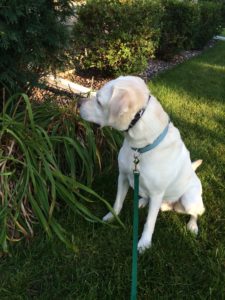Will it Really Work for My Pet?
Many of our customers are skeptical before getting their DogWatch hidden fence because they wonder, “Will it really work for my pet?” People wonder if their dog is too dumb or too stubborn or too old or too small. But all dogs and cats are capable of learning their boundaries with a hidden fence. In 29 years, we’ve never had a dog fence not work!
Our 4-day training plan teaches dogs and cats where to go and where not to go with their new DogWatch fence. The visual reminder of flags, starting at a low correction level, and teaching your pet with repetition allows her to slowly learn these things: watch out for the flags, the rest of the yard is safe, and if you feel a correction turn back towards home to make it go away. Sometimes dogs excel more in one of those areas than the others, but in time they all pick up all three. Old and less-smart pets are no exception.
If your pet is more stubborn or has a higher tolerance, there are higher correction levels to ensure she stops at her boundary. Most dogs end up at a level 4, but there are 7 levels in case you need them. For smaller dogs and cats, we have an R7 Mini receiver collar that is very small and lightweight. Smaller dogs and cats don’t usually have a lower tolerance, so there is no difference in the intensity of the correction, just the size of the box on the collar strap. In fact, cats tend to have a higher tolerance than dogs.
To help ease your mind even more, our receivers have AutoMemory and FastReact. If your pet challenges the boundary, the correction level automatically goes up for 24 hours to. And even if your pet is running, they receive a warning and a correction before he reaches the wire, not while traveling over it.
